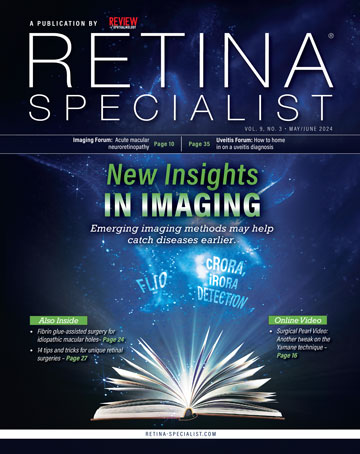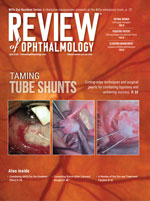In the past few years, the FDA has approved several novel hypoglycemic medications, such as GLP-1 agonists (e.g., Ozempic) or SGLT-2 inhibitors (e.g., Farxiga and Jardiance), indicated for patients with diabetes to help improve glucose control, consequently helping stave off disease-related complications like diabetic retinopathy. While keeping blood sugars in range reduces long-term risks of microvascular complications in diabetes mellitus, research is conflicting regarding the specific effects of these popular new drugs on DR progression. To investigate, the authors of a new clinical cohort study evaluated the effects of both GLP-1 agonists and SGLT-2 inhibitors on DR and its progression using a large, diverse, real-world population database. Their findings, described below, were recently published in the American Journal of Ophthalmology.
Included patients had an ICD-10 code of non-proliferative DR and monotherapy treatment, excluding insulin, with GLP-1 agonists or SGLT-2 inhibitors. Those with a history of PDR were excluded. The researchers compared the rate of progression to PDR and rate of development of diabetic macular edema between patients on GLP-1 agonists vs. those on SGLT-2 inhibitors. After propensity score matching, a total of 6,481 patients were identified in each medication group.
The results showed that patients on monotherapy with GLP-1 agonists had a higher rate of progression to PDR compared to those on SGLT-2 inhibitors, demonstrated at year one and year three after initiation of therapy. The GLP-1 agonist group also had a higher rate of new-onset DME than the SGLT-2 inhibitor group, observable at multiple time points, including three months, six months, one year and three years after initiation of therapy. Importantly, the researchers also pointed out in their paper, “This class-specific difference in developing vision-threatening complications appeared to be more pronounced over time.”
Study co-author Ehsan Rahimy, MD, of Stanford University, notes that the results didn’t exactly come as a surprise. “Our working hypothesis is that the cases that get worse are likely patients who don’t have good A1C to begin with and they go on these GLPs and get this massive reduction—almost like their sugar level crashes,” he says. “Just imagine that delta—that change—where the velocity of the correction is somewhat disrupting the homeostasis of the retinal microvasculature environment. The reason I say it doesn’t surprise us that much is there have been case examples of this in the past, such as when patients were getting gastric banding or bariatric surgery. Those were other examples of an extreme where some patients just stopped eating and lost so much weight that their A1C levels crashed and we’d see a worsening of the retinopathy.
“This is not to say anything negative about this class of medications,” Dr. Rahimy continues. “I’ve seen patients do well on them. They’re truly revolutionary agents, as we’re seeing their application across so many other areas of medicine. We need to better understand which patients we potentially need to monitor more closely, and to come up with better guidelines as eye-care providers on how we want to screen, especially in new starts on these meds or patients already on them.”
There was no significant difference in mean HbA1c levels or the need for secondary interventions such as intravitreal anti-VEGF injections, panretinal laser photocoagulation or pars plana vitrectomy between the GLP-1 agonist group and the SGLT-2 inhibitor group, except for a slightly higher need for anti-VEGF agents in the GLP-1 agonist group at three years.
The researchers concluded, “Our large retrospective cohort study found that GLP-1 agonists carried a higher rate of progression to PDR and DME compared to SGLT-2 inhibitors.” They encouraged clinicians “to be aware of these potential effects and to consider the current retinopathy status when initiating treatment with newer hypoglycemic agents to ensure these patients are appropriately monitored for developing potential vision-threatening complications.”
Reference
1. Wai KM, Mishra K, Koo E, et al. Impact of GLP-1 Agonists and SGLT-2 inhibitors on diabetic retinopathy progression: an aggregated electronic health record data study. Lee et al. Am J Ophthalmol. April 2024. [Epub ahead of print].
The Verdict on Aspirin and AMD Prevention
Although treatments that restore vision lost from age-related macular degeneration have flourished in the nearly two decades since the advent of anti-VEGF agents, there remains no proven intervention that can prevent onset on a widespread scale. Clinicians are left to advising patients on lifestyle modifications, including dietary changes and considerations of AREDS supplements when appropriate. Aspirin, it seems, will be no help either.
That intervention was explored in a new study published yesterday in JAMA Ophthalmology.1 Researchers looked at data from a large double-masked, placebo-controlled trial called Aspirin in Reducing Events in the Elderly (ASPREE), jointly conducted in the United States and Australia from 2014 to 2018 that tested for efficacy of low-dose aspirin to prolong disability-free survival of older adults. An offshoot of the main study called ASPREE-AMD looked specifically at aspirin’s influence on the course of the disease.
This substudy enrolled a total of 4,993 Australian individuals in ASPREE aged 70 or older without dementia, independence-limiting physical disability, cardiovascular disease or chronic illness limiting five-year survival and with gradable retinal images at baseline. Participants either received 100 mg per day of aspirin or a placebo for three years. At trial termination, retinal follow-up data were available for 3,208 patients, with 3,171 being analyzed for AMD incidence and progression. This resulted in a median age of 73.5 years of age and median follow-up time was 3.1 years. The aspirin group saw a cumulative AMD incidence of 19.4 percent (195 of 1,004) while the placebo group’s AMD rate was 19.1 percent (187 of 979). Cumulative progression from early/intermediate AMD to late AMD rates were also similar; the aspirin group rate was 2.3 percent (14 of 615) and the placebo group was 3.1 percent (18 of 573).
It should be noted that the ASPREE trial was terminated early and thus captured fewer cases of AMD progression. However, there was also no subgroup of participants for which the effects were different from the main results. That is, aspirin’s impact on AMD was not affected by age, use of alcohol or smoking, sex, BMI, hypertension or use of statins. As well, no evidence suggested that late AMD was more likely to occur in the group randomized to low-dose aspirin.
The study authors relay in their journal article that aspirin was proposed as an intervention for AMD because of its anti-inflammatory property, since inflammation likely plays a role in AMD pathogenesis. These suggestions that aspirin may be beneficial for reducing either AMD risk or progression came from the earlier randomized clinical trials of the Physicians’ Health Study with five-year treatment and the Women’s Health Study with 10-year treatment. However, neither result in these two studies were significant, despite the larger sample sizes and longer aspirin exposure. Both were limited instead by reliance on self-reported AMD status and confirmed by medical reports. Self-reporting is inaccurate, though, especially in early AMD stages.
In the JAMA Ophthalmology article, the authors succinctly summarize that, “overall, these results do not support the suggestion that low-dose daily aspirin prevents the development or progression of AMD.” RS
Reference
1. Robman LD, Wolfe R, Woods RL, et al. Effect of low-dose aspirin on the course of age-related macular degeneration: A secondary analysis of the ASPREE randomized clinical trial. JAMA Ophthalmol. May 23, 2024. [Epub ahead of print].
In Brief AEYE Health received the first FDA clearance for a fully autonomous AI that diagnoses referable diabetic retinopathy from retinal images obtained by a handheld camera. Combining a fully autonomous AI with a handheld device, the company says that the portable solution can be used for point-of-care screening, whether in the clinic or at home. Haag-Streit launched the Eyesi Indirect Ophthalmoscope ROP Simulator for training of retinal exams on premature babies and classification of retinopathy of prematurity. Iveric Bio announced the U.S. Centers for Medicare and Medicaid Services assigned a unique, permanent Healthcare Common Procedure Coding System J-code for Izervay (avacincaptad pegol intravitreal solution) for the treatment of geographic atrophy secondary to age-related macular degeneration. The new J-code, J2782, was effective April 1. |



